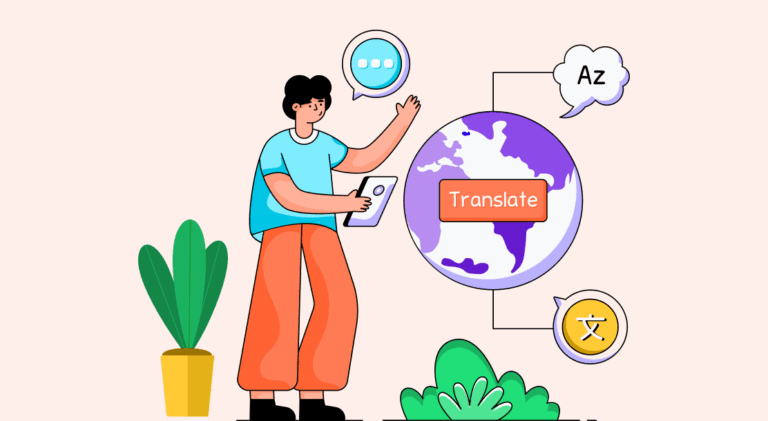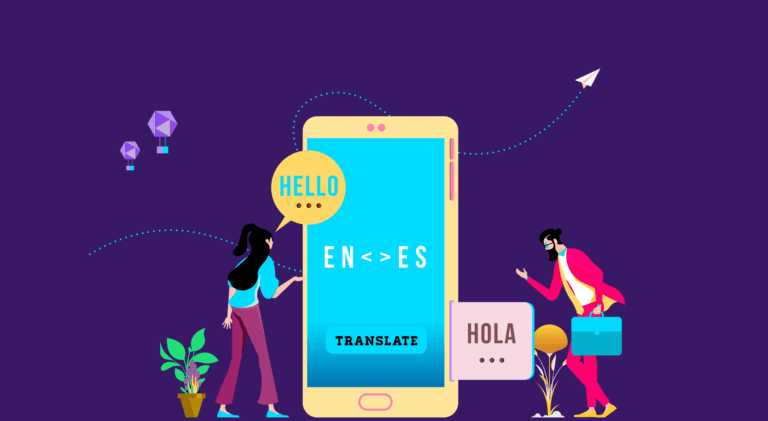6 Ways to Determine Translation Rates For Your Next Project

Do you know how to price your translation services? If you’re like most language service providers, the answer is probably “no.” This is because pricing translation is a complex task that requires taking into account a variety of factors, such as the text type, the source and target languages, the text length, the turnaround time, and more.

Fortunately, some tried-and-true methods for pricing translation can help you arrive at a fair and accurate price for your services. This article will discuss the six most effective ways to determine translation rates.
6 Tips To Help You Determine Your Translation Rates
Knowledge about pricing your services as a translator is essential. If you don’t know how to do it, you can easily charge too little or too much for your services. Below are six tips to help you determine the proper translation rates for your translation projects.
1. Know your target market
Before you price your translation services, you need to know your target market. Are you targeting businesses or individuals? What industry are your clients in? What is their budget for translation services? Knowing your target market will help you determine your translation prices.

2. Consider the type of text.
The type of text you’re translating will also impact the translation rates. A legal document, for example, will typically cost more to translate than a marketing brochure. This is because legal documents often contain specialized terminology that must be translated accurately.
3. Source and target languages
Your translation charges will also change with the source and target language. Some languages are more challenging to translate than others, and that reflects in the translation rate. That’s why you’ll often see higher prices for translations from English into Chinese or Japanese, for example, than for translations from English into Spanish.

4. Length of the text
The length of the text you’re translating will also play a role in pricing. A longer document will obviously take more time to translate. Always remember to charge by the word because by the hour can cost more. You can use a word count tool like WordCounter to determine the text length. Many language service providers also use a “per-word” pricing model.
5. Turnaround time
The turnaround time you can provide will also affect the translation rates. You can charge a premium for your services if you can provide a quick turnaround time. Clients always want their documents as soon as possible, so if you can deliver them faster than your competitors, they’ll be willing to pay more for your services. This is one of the reasons many language service providers offer discounts for rush orders.
6. Use a pricing calculator.
A pricing calculator can be a helpful tool for pricing your translation services. There are several different calculators available online. You can use a simple Google search to find one that will work for you.
By keeping these six factors in mind, you can be sure that you’re pricing your translation services accurately. Also, remember that your prices may need to be adjusted over time as market conditions change.

Factors That Affect Your Translation Rates
Several factors determine the total cost of a translation. When translating any business document or website, the first thing that springs to mind is the price of the service. Professional translation services are another primary concern when selecting an expert translation company. Several variables influence translation pricing; let us look at them in depth:
1. Surcharge for urgency
If a translation is required fairly quickly, the professional will probably add an urgency surcharge to reflect this, and the translation rates will increase as a result. Most customers pay a 10% premium for urgency; some professionals may even quadruple their translation rates for extreme urgency.
Because some providers do not work with great urgency or only in specific language pairs, you should always inspect the translation provider’s terms of service before accepting a job with an extremely tight deadline.
2. Technicality of the document
Furthermore, the more specialized the field, the more the requirement for a specialized translator. The cost of translating a technical document is higher than, say, a marketing document.

The fee for extremely complex papers varies from 10% to 25%. On the other hand, taking on these types of tasks necessitates special equipment and reference materials that not all professionals have, so double-check before you begin.
3. Computer format of documents
The cost of switching from Word to HTML is considerably less than the expense of converting a web page, PowerPoint file, or InDesign file. If a design is necessary, an additional charge will be levied for the extra work and translation.
The layout is priced per page at around USD 5 or per hour at about USD 30. Because they include a lot of repetitions or highly specialized language, various sorts of specialist papers, such as medical reports or legal documents, need their own CAT tools to be translated correctly. These tools also incur an extra cost for the client.

4. The character of the translation: official or not
Translations performed by sworn translators are more expensive than technical translations. Only sworn translators employed by the Ministry of Foreign Affairs have the authority to give official readings in various nations.
The number of official interpreters is significantly lower than that of technological interpreters. In addition, sworn translators must seal and sign the translations and submit them on paper. As a result, sworn translation costs are higher. The official translation of a one-page certificate costs between 50 and 75 USD+ VAT, depending on the location to which it is being sent.
5. Language pair
This is the most crucial consideration in translation prices. The more translators work in a language pair, the greater the competition and lower the translation rates; there are far more English-to-Spanish translators than Italian-to-Spanish translators. An English-to-Spanish translator charges less than an Italian-to-Spanish one.
The most expensive translations are those with fewer translators and languages from countries with a high standard of living. For example, a Swedish or Norwegian translation can cost more than a French or Portuguese translation.
To Summarize
Translation rates are often determined by the language pair, document technicality, and the urgency with which it is required. Other less well-known factors also affect the final translation rates, such as the document format to be translated or whether the translation is sworn or not.
So these are some factors to remember when determining your translation rates for future projects.
FAQs
The average translation rates depend on the website’s length and the languages involved.
The most expensive languages to translate are typically those with a small pool of translators, such as Swedish or Norwegian. Translation into languages spoken in countries with a high cost of living will also be more expensive.
Yes, if you require a translation urgently, the translation rates will likely be higher due to the rush fee that may be charged. However, this will vary depending on the translation company you use.
The price difference between a human and a machine translation can be significant, with human translations typically being more expensive. This is because machine translations are not always accurate and may require considerable editing to be usable.
Latest Blogs
Explore how Google’s 2025 AI search updates triggered ranking chaos. Learn actionable strategies to adapt your SEO for AI Overviews, zero-click searches, and SERP volatility. Stay ahead now.
Learn how to rank on AI search engines like ChatGPT, Perplexity, and Gemini by optimizing your content for authority, structure, and relevance. Stay ahead in AI-driven search with this strategic guide.
Explore the best healthcare SEO services for your medical practice. Improve online visibility and effectively reach more patients in need of your services.
Get your hands on the latest news!
Similar Posts

Translation
5 mins read
All You Need to Know About Language Translation and Terminology Management

Translation
5 mins read
6 Reasons to Translate Content into German

Translation
5 mins read